Homepage > News items (2025) - (2024) - (2023) - (2022) - (2021) - (2020) - (2019) - (2018) - (2017)
Monthly news items, video links and blog on the Frans Absil Music website
News Archive 2020
December 2020: Tutorial series on Schillinger First Group Pitch-Scales complete
Visit the YouTube channel where the series on Schillinger First Group of Pitch-Scales is complete with two new episodes:
- Book 2 in the Schillinger System of Musical Composition is about pitch-scales.
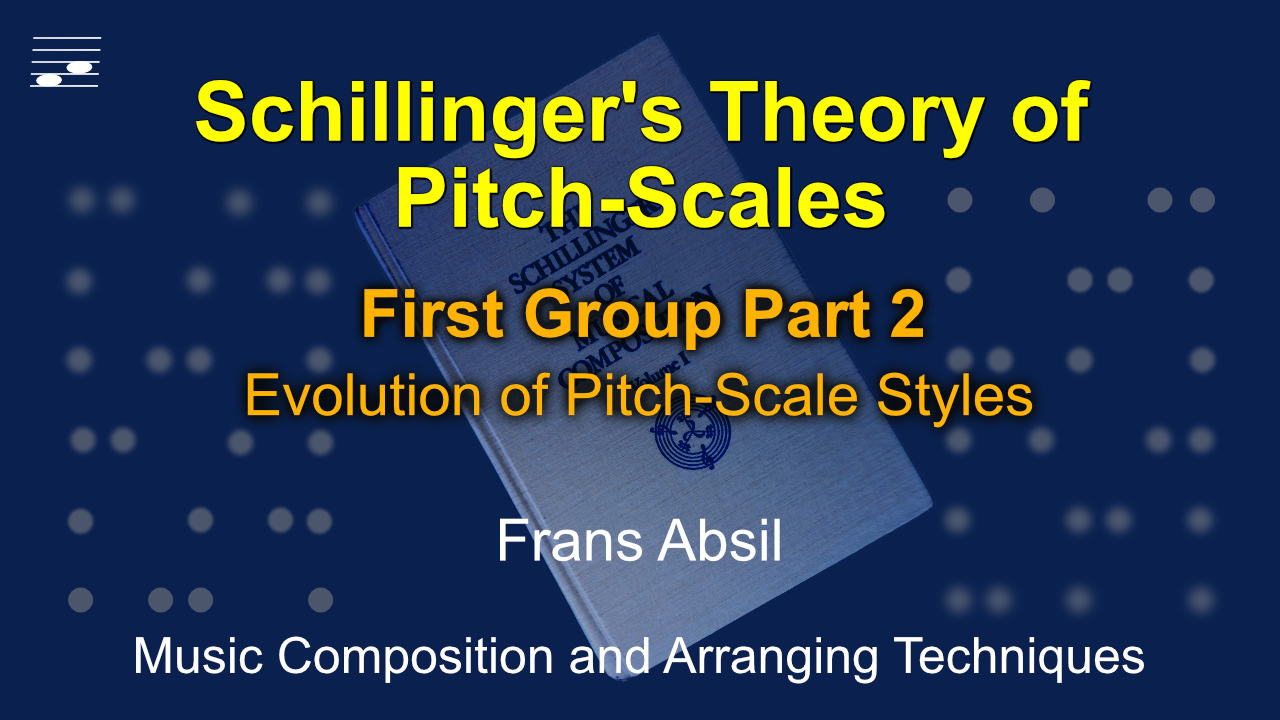 Group 1 scales have a single root, a one octave range, and include the familiar diatonic scales.
In Part 2 (25:01) you'll learn several approaches to the evolution of pitch-scale styles, including pitch-scale families, derivative and modal scales through circular pitch and interval permutation, and the creation of partial scales
through either pitch-unit or interval subset selection.
Group 1 scales have a single root, a one octave range, and include the familiar diatonic scales.
In Part 2 (25:01) you'll learn several approaches to the evolution of pitch-scale styles, including pitch-scale families, derivative and modal scales through circular pitch and interval permutation, and the creation of partial scales
through either pitch-unit or interval subset selection.
- The final episode is
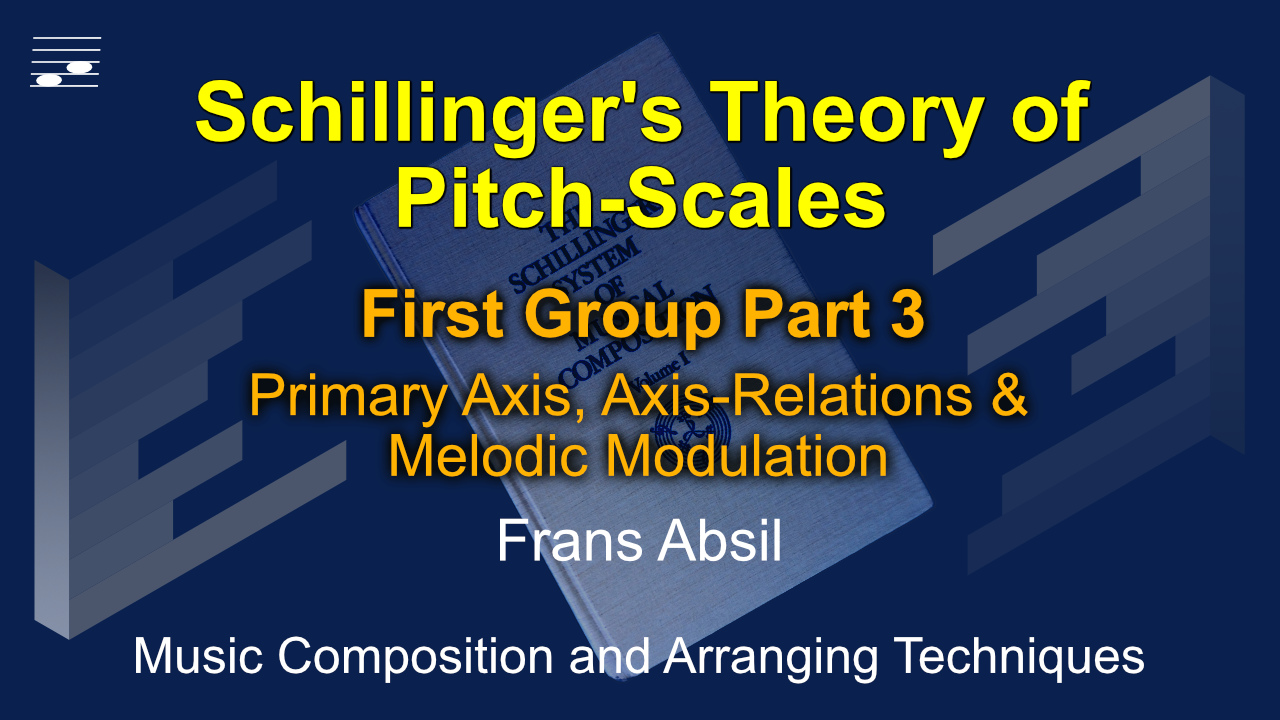 Part 3 (26:19). In this tutorial we discuss the primary axis of a melodic continuity, the four possible axis-relations (for constant or changing tonality and modality), and the three techniques for melodic modulation. All episodes (Part 1 was published in September 2020 >>) contain application examples.
Part 3 (26:19). In this tutorial we discuss the primary axis of a melodic continuity, the four possible axis-relations (for constant or changing tonality and modality), and the three techniques for melodic modulation. All episodes (Part 1 was published in September 2020 >>) contain application examples.
November 2020: Two Bars, I Owe You Two Chocolate Bars
On the YouTube channel watch the music video of a new piece:
- The composition
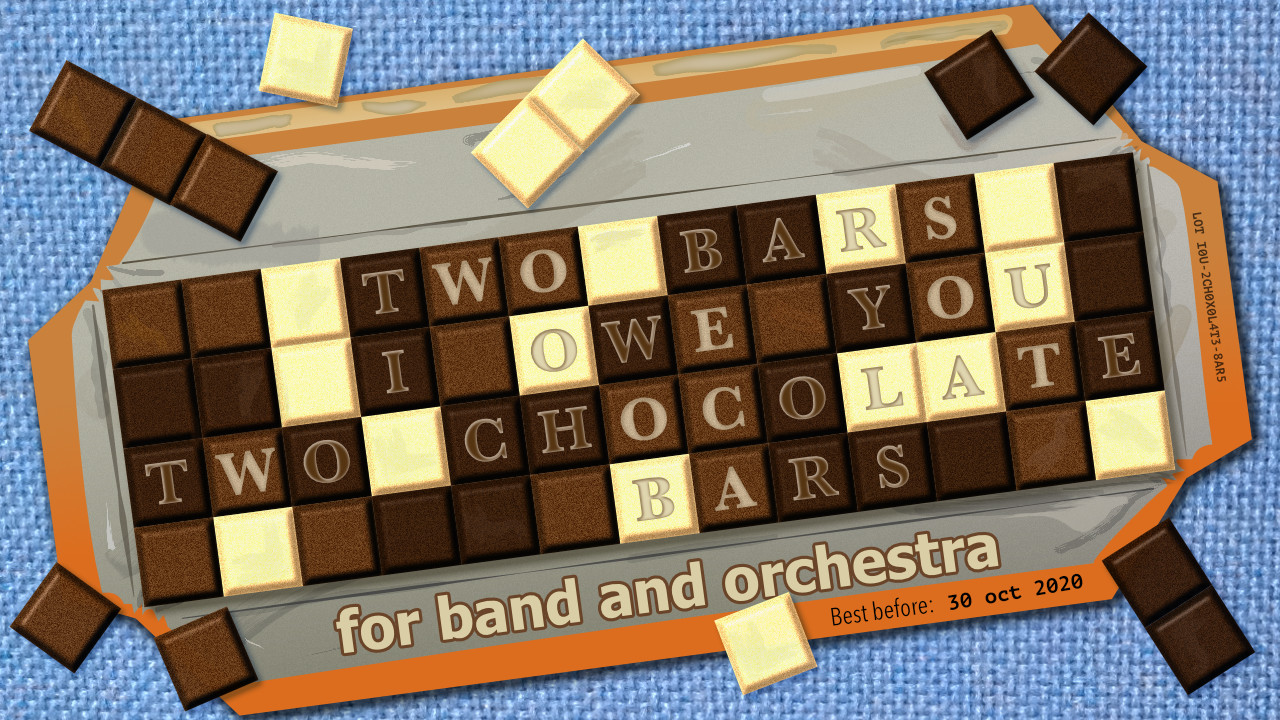 'Two Bars, I Owe You Two Chocolate Bars'
(6:10) for band and orchestra has bridge form ABCBA, with lively A-sections featuring guitars, slow B-sections in 4/4 and 3/4 meter and a more orchestral texture, and the agitato middle section. The harmony combines regular chord changes with pantriadic phrases and polychords. This video contains an annotated reduced score with audio rendering.
For more information and the full score go to Two Bars,... information page >>
'Two Bars, I Owe You Two Chocolate Bars'
(6:10) for band and orchestra has bridge form ABCBA, with lively A-sections featuring guitars, slow B-sections in 4/4 and 3/4 meter and a more orchestral texture, and the agitato middle section. The harmony combines regular chord changes with pantriadic phrases and polychords. This video contains an annotated reduced score with audio rendering.
For more information and the full score go to Two Bars,... information page >>
<< Previous - Top of page - Next >>
October 2020: Model-based Virtual Brass Instrument Comparison
In my quest for model-based virtual brass instruments I published more comparison videos on my YouTube channel:
- Solo trumpet video,
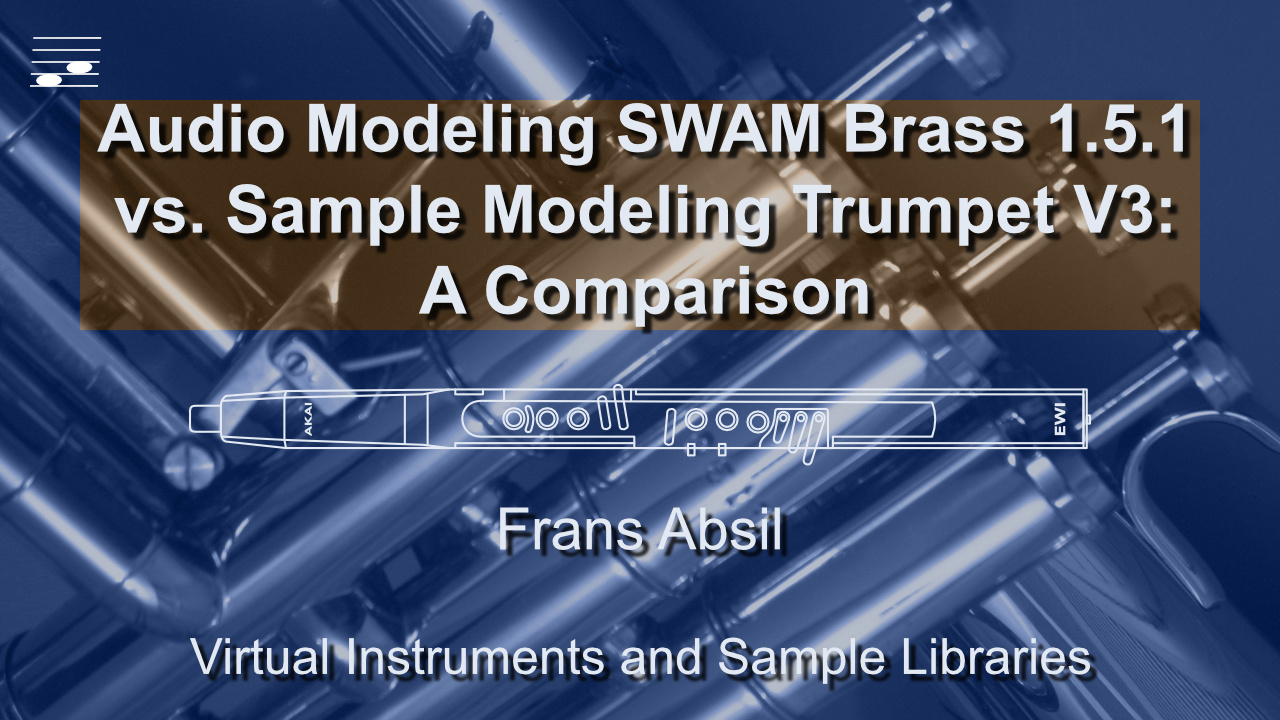 Audio Modeling SWAM Brass 1.5.1 vs. Sample Modeling Trumpet V3: A Comparison (8:59).
This video compares the classical music trumpet sound of the Audio Modeling SWAM Solo Brass Bundle (V1.5.1, rel. August 2020) with the Sample Modeling Trumpet V3 instrument plugin. Examples are performed with an AKAI EWI 5000 wind controller: Ravel, Ferling.
Audio Modeling SWAM Brass 1.5.1 vs. Sample Modeling Trumpet V3: A Comparison (8:59).
This video compares the classical music trumpet sound of the Audio Modeling SWAM Solo Brass Bundle (V1.5.1, rel. August 2020) with the Sample Modeling Trumpet V3 instrument plugin. Examples are performed with an AKAI EWI 5000 wind controller: Ravel, Ferling. - French Horn (Horn in F) video,
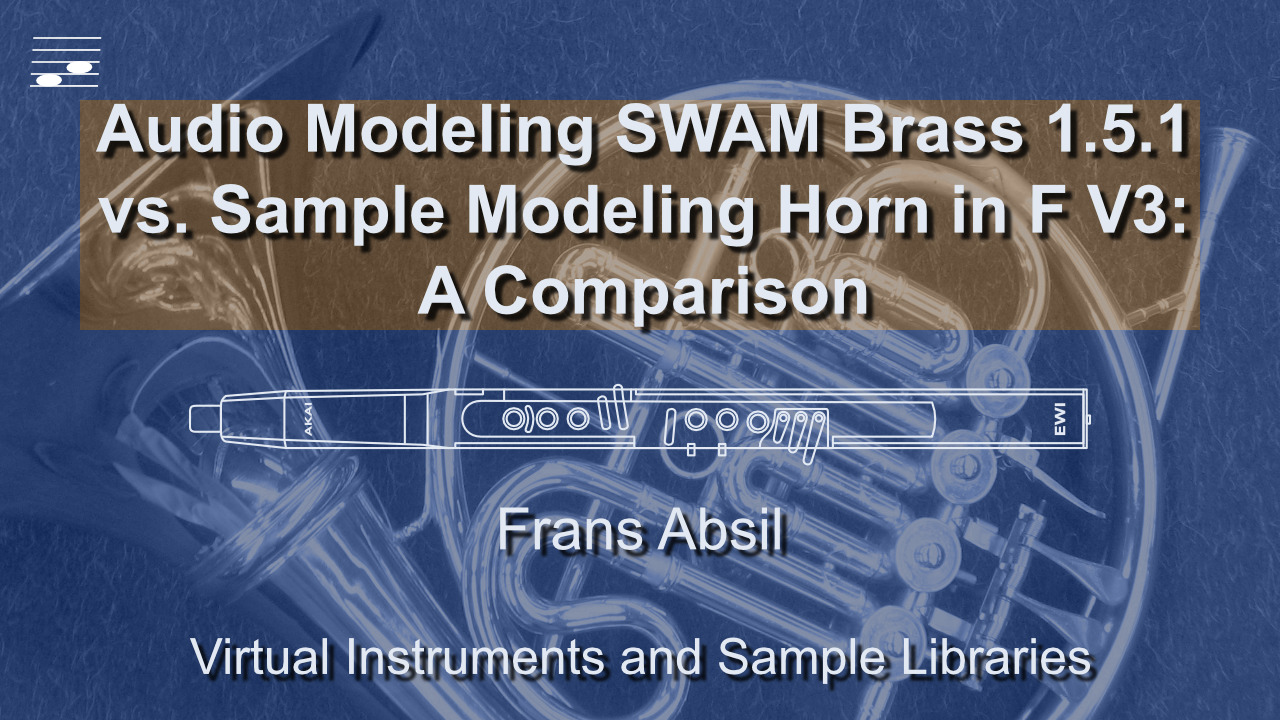 Audio Modeling SWAM Brass 1.5.1 vs. Sample Modeling Horn in F V3: A Comparison (8:09).
Same approach as in the video on the solo trumpet. Classical music examples (symphonic repertoire themes and etudes) from Brahms, Tchaikovsky, Strawinsky, Ferling.
Audio Modeling SWAM Brass 1.5.1 vs. Sample Modeling Horn in F V3: A Comparison (8:09).
Same approach as in the video on the solo trumpet. Classical music examples (symphonic repertoire themes and etudes) from Brahms, Tchaikovsky, Strawinsky, Ferling. - Tenor Trombone video,
 Audio Modeling SWAM Brass 1.5.1 vs. Sample Modeling Trombone V3: A Comparison (11:27).
Same approach as for the solo trumpet. Classical music examples (symphonic repertoire themes and etudes) from Mozart, Wagner, Karg-Elert.
Audio Modeling SWAM Brass 1.5.1 vs. Sample Modeling Trombone V3: A Comparison (11:27).
Same approach as for the solo trumpet. Classical music examples (symphonic repertoire themes and etudes) from Mozart, Wagner, Karg-Elert. - Tuba (Contrabass Tuba) video,
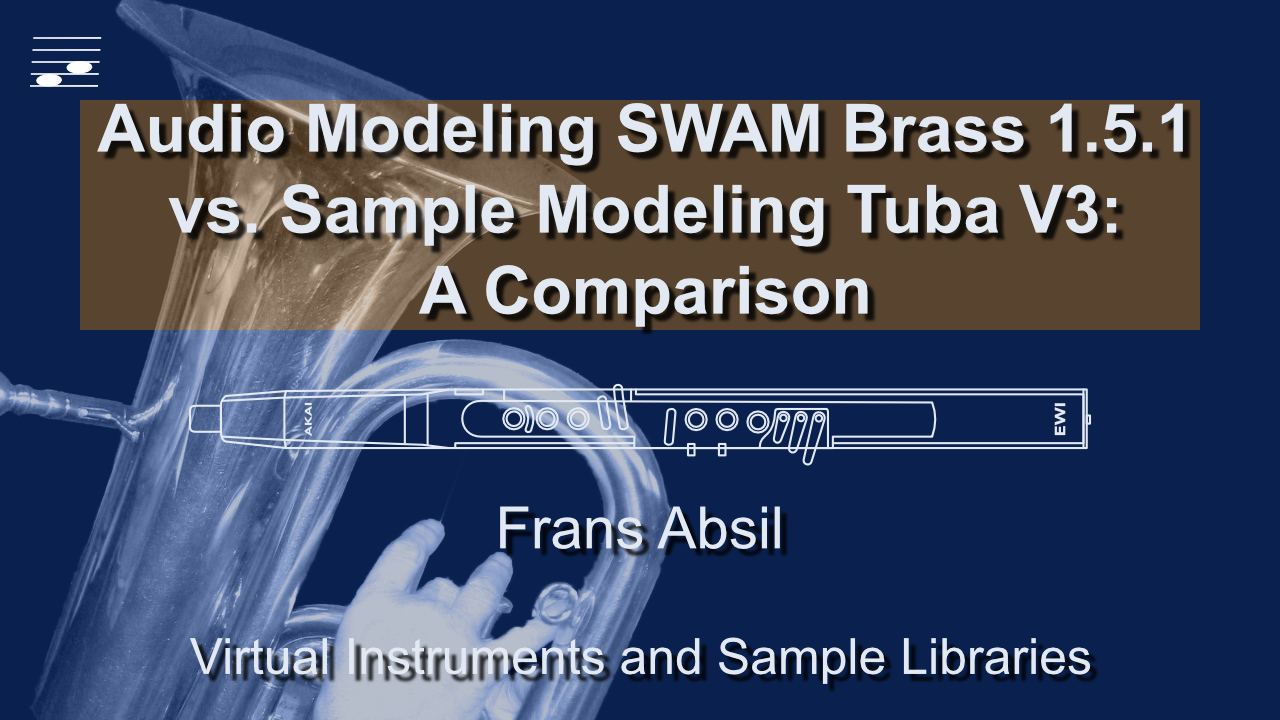 Audio Modeling SWAM Brass 1.5.1 vs. Sample Modeling Tuba V3: A Comparison (7:50).
Same approach as for the solo trumpet. Classical music examples (symphonic repertoire themes and etudes) from Wagner, Strawinsky, Karg-Elert.
Audio Modeling SWAM Brass 1.5.1 vs. Sample Modeling Tuba V3: A Comparison (7:50).
Same approach as for the solo trumpet. Classical music examples (symphonic repertoire themes and etudes) from Wagner, Strawinsky, Karg-Elert.
<< Previous - Top of page - Next >>
September 2020: Schillinger's Theory of Pitch-Scales
Here are some video tutorial tips:
- In the Schillinger System of Musical Composition, Book 2 is about pitch-scales. Watch the video tutorial
 Schillinger's Theory of Pitch-Scales: First Group Part 1
and learn about the characteristics of single root scales with a one-octave range limit. The Schillinger generalization approach shows all options when combining interval-units, how to create a melodic continuity, the synchronisation with a rhythm pattern, and the tetrachord framework for diatonic 7-pitch scales. You'll also find three application examples.
Schillinger's Theory of Pitch-Scales: First Group Part 1
and learn about the characteristics of single root scales with a one-octave range limit. The Schillinger generalization approach shows all options when combining interval-units, how to create a melodic continuity, the synchronisation with a rhythm pattern, and the tetrachord framework for diatonic 7-pitch scales. You'll also find three application examples. - If, like me, you like to design your own presets for the ARP 2600 V3 software synthesizer in the Arturia V Collection then on this YouTube channel you will find a great set of tutorials: One Man And His Songs. These are essential companion material to the limited documentation in the Arturia manual.
<< Previous - Top of page - Next >>
August 2020: The Retrograde-Inversion Chain
The Retrograde-Inversion Chain (RICH) is a transformation in the pitch domain, that creates a longer melody from a short ordered note series motif. There's a tutorial on this subject on my YouTube channel:
- Watch the video tutorial on the RICH Transformation, entitled
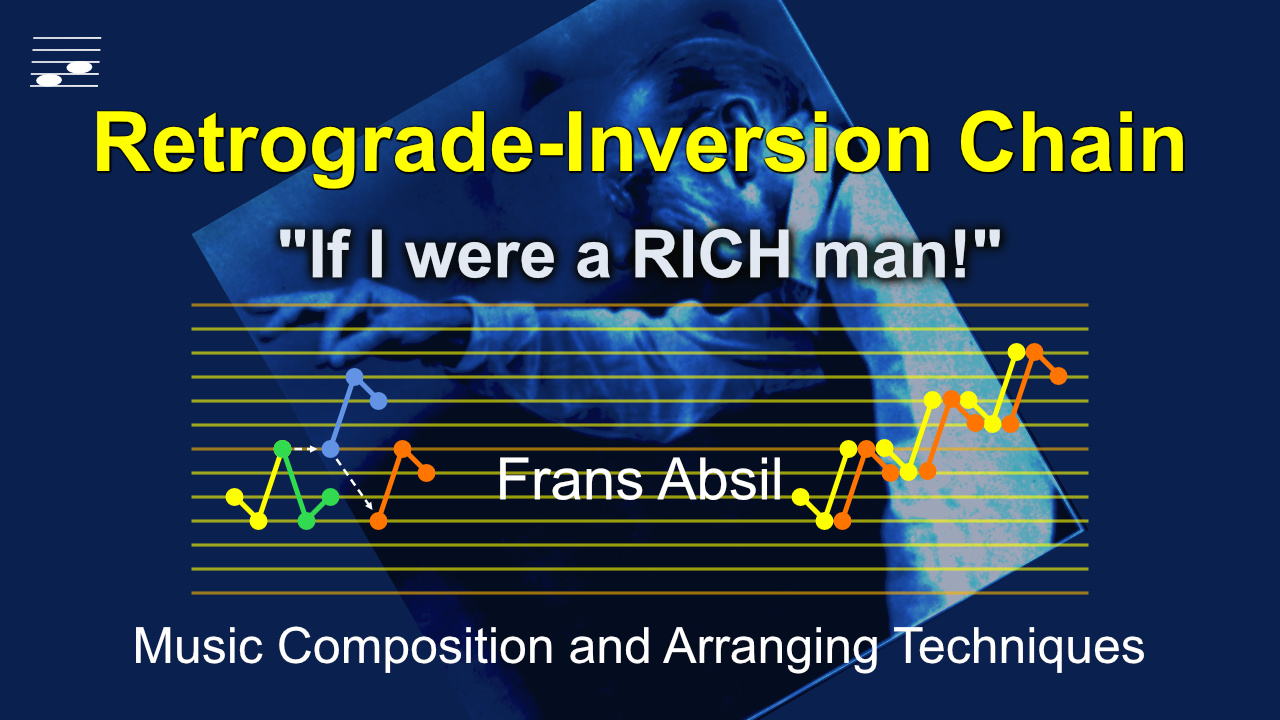 The Retrograde-Inversion Chain: "If I were a RICH man!"
It discusses RICH fundamentals, properties and application. After presenting a number of classical music examples in great detail this technique is applied to the creation of three melodic phrases and three (modulating) transitions.
The Retrograde-Inversion Chain: "If I were a RICH man!"
It discusses RICH fundamentals, properties and application. After presenting a number of classical music examples in great detail this technique is applied to the creation of three melodic phrases and three (modulating) transitions.
- Visit the companion HTML page, with an overview of the subject and a link to a Retrograde-Inversion Chain PDF booklet at Retrograde-Inversion Chain introduction page >>
<< Previous - Top of page - Next >>
July 2020: Longer chord progressions with Riemannian Transformations
There is fresh content on the website and on my YouTube channel:
- You may watch the final tutorial on Neo-Riemannian Theory,
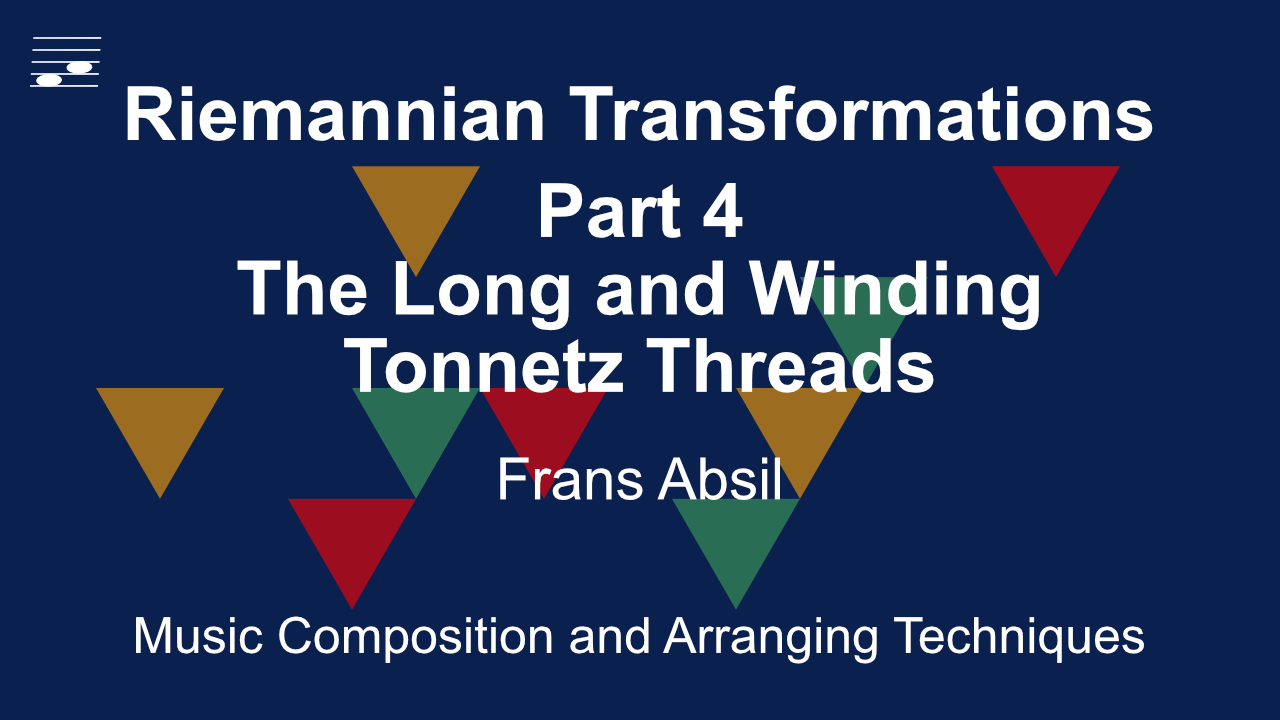 an episode called
Riemannian Transformations: Part 4 The Long and Winding Tonnetz Threads (20:17).
It presents two longer chord progression examples in the Tonnetz diagram, with multiple Riemannian transformation types and Schillinger diatonic and symmetric harmony system root cycles. Applying Instrumental Forms, these progressions have been developed into composition examples. This tutorial is in the Music Composition Techniques playlist.
an episode called
Riemannian Transformations: Part 4 The Long and Winding Tonnetz Threads (20:17).
It presents two longer chord progression examples in the Tonnetz diagram, with multiple Riemannian transformation types and Schillinger diatonic and symmetric harmony system root cycles. Applying Instrumental Forms, these progressions have been developed into composition examples. This tutorial is in the Music Composition Techniques playlist. - Viewers of earlier episodes have requested template Tonnetz diagrams that can be used in the design of chord progressions. Therefore I've created a companion HTML page, with an overview of the subject and links to the template PDF diagrams and tutorials. I will add more content here, such as the complete and condensed score examples from the video tutorials. Visit the Tonnetz Diagram and Neo-Riemannian Theory page >>
<< Previous - Top of page - Next >>
June 2020: Spitfire Audio Westworld Scoring Competition 2020
- For the Spitfire Audio Westworld Scoring Competition 2020
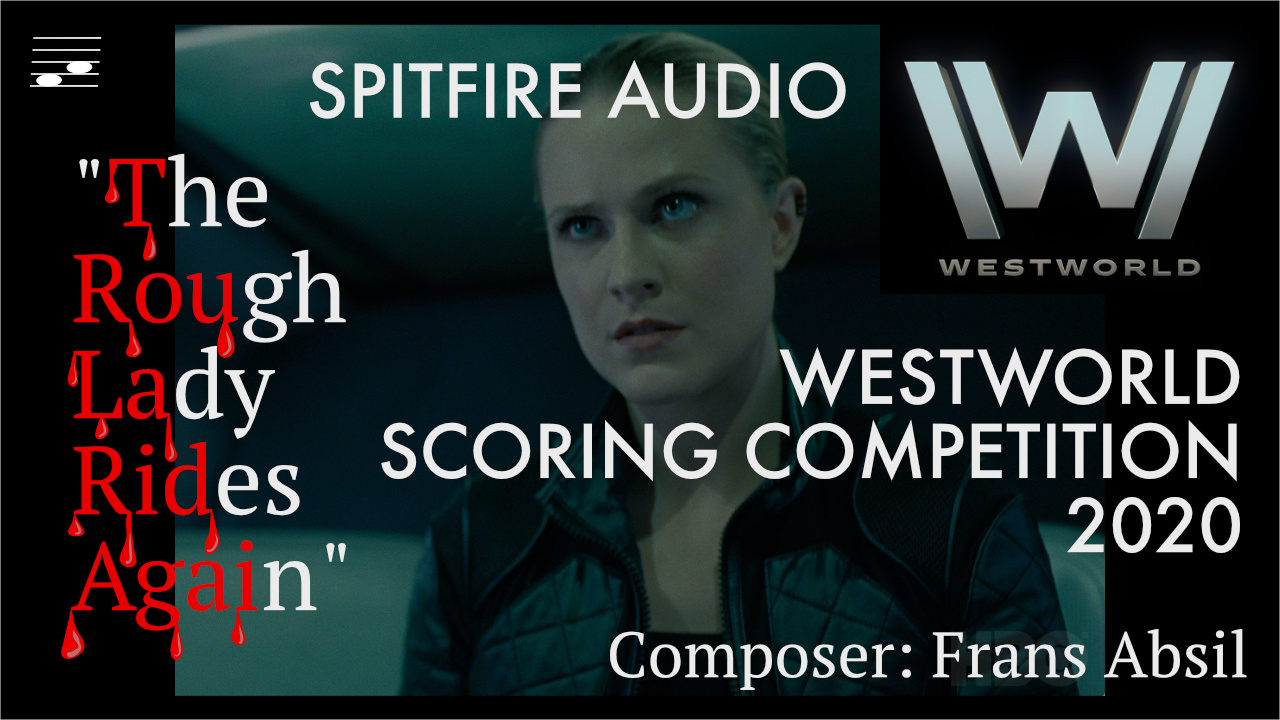 the assignment was to rescore the car chase scene in Episode 5, HBO Westworld Season 3. My entry is a score with a combination of virtual orchestral and electronic instruments. Watch this cue, called
'The Rough Lady Rides Again' (4:20). Below are some production details.
the assignment was to rescore the car chase scene in Episode 5, HBO Westworld Season 3. My entry is a score with a combination of virtual orchestral and electronic instruments. Watch this cue, called
'The Rough Lady Rides Again' (4:20). Below are some production details.
- The source material was sketched on paper. I created the Midi mockup in Steinberg Cubase 10, synchronising the score with the hitpoint markers in the video. Each day I created a fresh project copy, since files may get corrupted and refuse to open (which happened indeed). The orchestral instruments (woodwinds, brass and strings) were loaded as three instances in Vienna Ensemble Pro 7. The audio mixdown was combined with the video and original sound in ScreenFlow, then uploaded to my YouTube channel.
- Also I created a full orchestral score in Steinberg Dorico 3.1. The score was prepared in Cubase, quantizing Midi events, setting up staff presets, and exporting as MusicXML. However, the Horns in F parts were corrupted upon import in Dorico, somehow caused by the staff preset settings. Since I could not identify the cause, I used the workaround by first importing into MakeMusic Finale (no errors here) and export the score from there. Tempo track and video marker transfer from Cubase to Dorico went smooth.
- For more information, such as instrumentation details and the full PDF score, visit the 'The Rough Lady Rides Again' documentation page >>
<< Previous - Top of page - Next >>
May 2020: Third order compound Riemannian Transformations
Watch the new episode on the YouTube channel:
- The tutorial series on Riemannian Transformations has been extended.
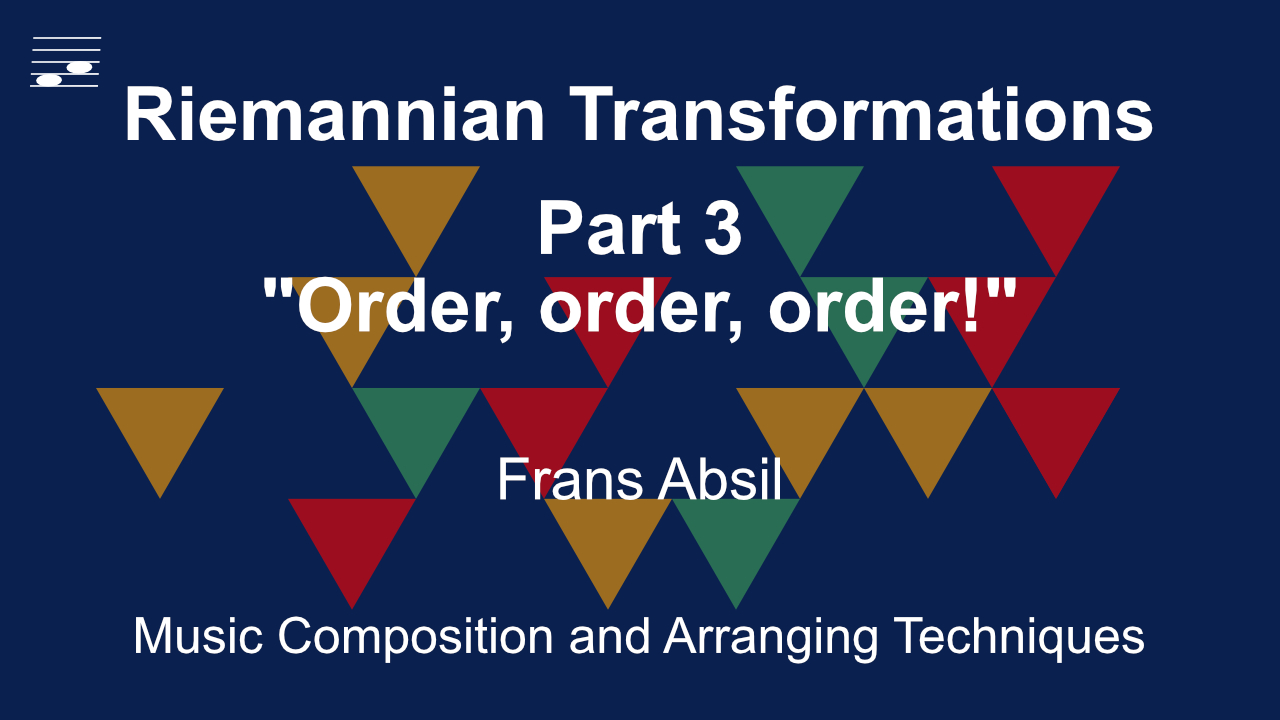 In the episode
Riemannian Transformations: Part 3 "Order, order, order!" (26:08) the focus is on 3rd order compound Riemannian transformations. These paths with 3 moves (combinations of the simple P, R and L transformations) in the Tonnetz diagram yield 6 options for a major or minor triad. The options are classified using the corresponding Schillinger diatonic and symmetric system root cycle patterns. Application is demonstrated in two chord progressions and example compositions. I will probably publish full scores later (see below). This tutorial is in the Music Composition Techniques playlist.
In the episode
Riemannian Transformations: Part 3 "Order, order, order!" (26:08) the focus is on 3rd order compound Riemannian transformations. These paths with 3 moves (combinations of the simple P, R and L transformations) in the Tonnetz diagram yield 6 options for a major or minor triad. The options are classified using the corresponding Schillinger diatonic and symmetric system root cycle patterns. Application is demonstrated in two chord progressions and example compositions. I will probably publish full scores later (see below). This tutorial is in the Music Composition Techniques playlist. -
Preparing the graphics for this month's episode I had a not so great time when exporting a MusicXML score from Logic Pro X and then seeing the resulting raw score in the Steinberg Dorico 3.1 music notation software. I am still learning the latter program, but was forced to spend hours on creating a decent full orchestral score and then convert this to a reduced score for the YouTube video. The problem lies in the source file, that has the two cues in 4/4 and 9/8 as a single project file. Instrument names were not transferred (I love the 20 or so Grand Pianos), and Midi regions were all over the place, with numerous redundant clefs and time signature signposts (see the piece of abstract art in the image below). So I had to play the detective in order to reconstruct the score as separate Flows in Dorico. I will do some experimentation next month and then publish a detailed workflow report on this website, with hopefully a more positive outcome (read about similar struggles in
July 2019 >>)

<< Previous - Top of page - Next >>
April 2020: Riemannian Transformations and SWAM Solo Brass testing
There is additional content on the YouTube channel:
- Watch the application of Riemannian Transformations, the 2nd episode in a series of video tutorials.
 In
Riemannian Transformations: Part 2 Five Paths to Domination (18:06) the simple and compound Riemannian transformations are applied to a Schillinger Dominant Pedal Point chord progression framework. Paths through the Tonnetz diagram are illustrated with short orchestral examples. This tutorial is in the Music Composition Techniques playlist.
In
Riemannian Transformations: Part 2 Five Paths to Domination (18:06) the simple and compound Riemannian transformations are applied to a Schillinger Dominant Pedal Point chord progression framework. Paths through the Tonnetz diagram are illustrated with short orchestral examples. This tutorial is in the Music Composition Techniques playlist. -
I am a strong believer in the potential of modeled virtual instruments, such as those in the Sample Modeling Brass and Solo and Ensemble Strings,
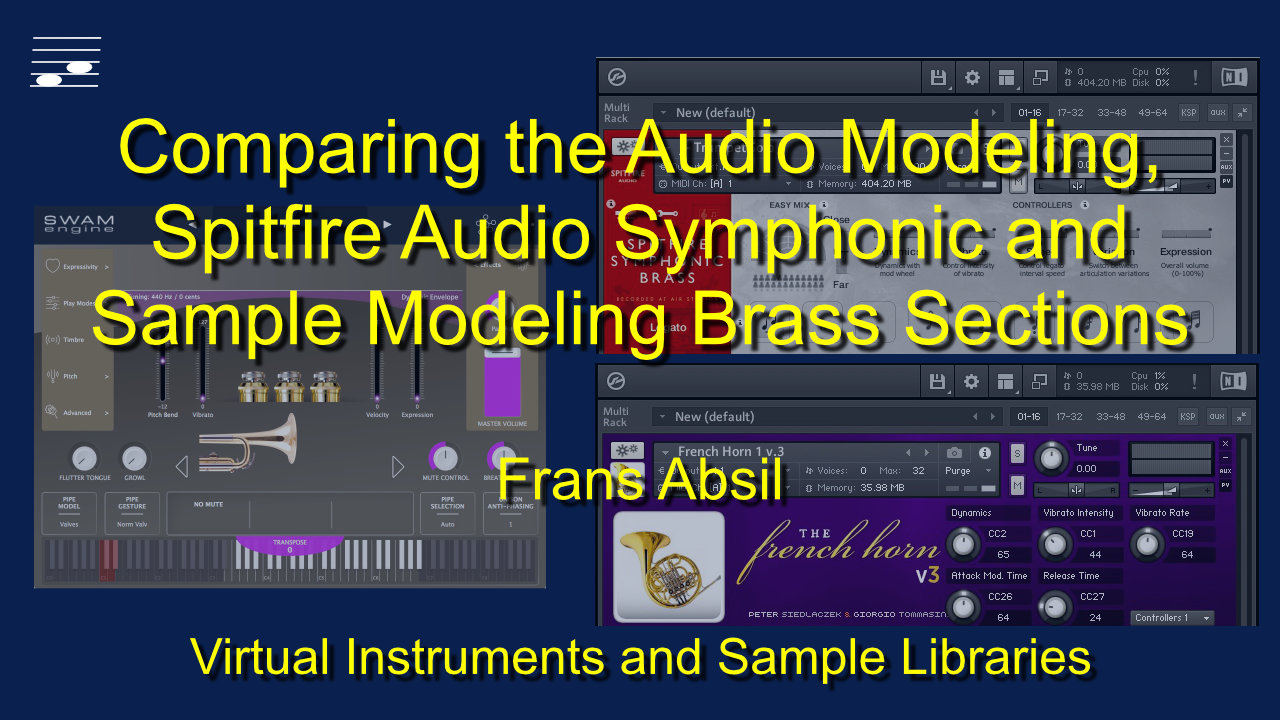 and the Audio Modeling SWAM Woodwinds and SWAM Solo Strings collections. At the end of February 2020 the latter company released the SWAM Solo Brass bundle. So I took my Akai EWI 5000 wind controller in order to test and compare these modeled instruments with the Spitfire Audio Symphonic Library samples.
In two videos you'll find the performance results of examples for solo brass and brass ensemble from the classical music repertoire. These videos may help evaluate the current potential of these instruments.
and the Audio Modeling SWAM Woodwinds and SWAM Solo Strings collections. At the end of February 2020 the latter company released the SWAM Solo Brass bundle. So I took my Akai EWI 5000 wind controller in order to test and compare these modeled instruments with the Spitfire Audio Symphonic Library samples.
In two videos you'll find the performance results of examples for solo brass and brass ensemble from the classical music repertoire. These videos may help evaluate the current potential of these instruments.
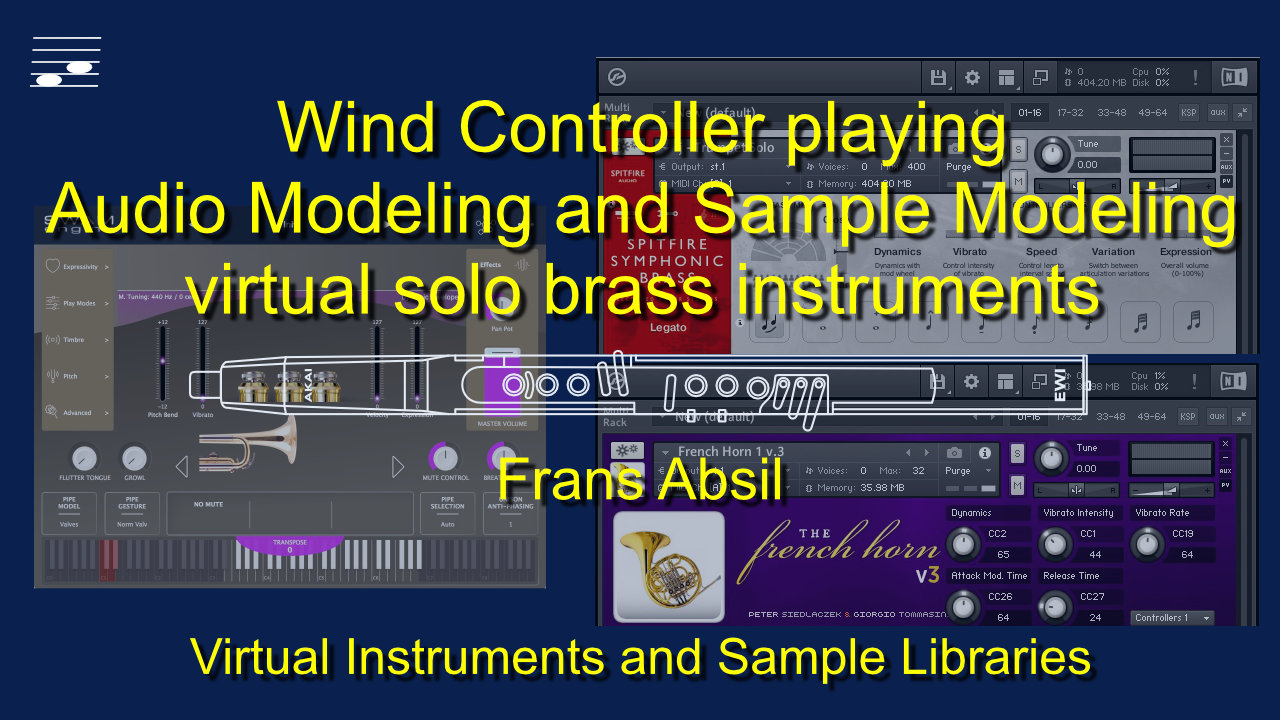 Click on the links or images:
Comparing the Audio Modeling, Spitfire Audio Symphonic and Sample Modeling Brass Sections (12:23), and
Wind Controller playing Audio Modeling and Sample Modeling virtual solo brass instruments (15:10).
Click on the links or images:
Comparing the Audio Modeling, Spitfire Audio Symphonic and Sample Modeling Brass Sections (12:23), and
Wind Controller playing Audio Modeling and Sample Modeling virtual solo brass instruments (15:10).
<< Previous - Top of page - Next >>
March 2020: Neo-Riemannian Theory and Arturia V Collection Midi Mapping
The additional content on this website and on the YouTube channel is:
- In case you would like to get an introduction to or learn about how to apply Neo-Riemannian Theory watch the first episode in a new series of YouTube video tutorials.
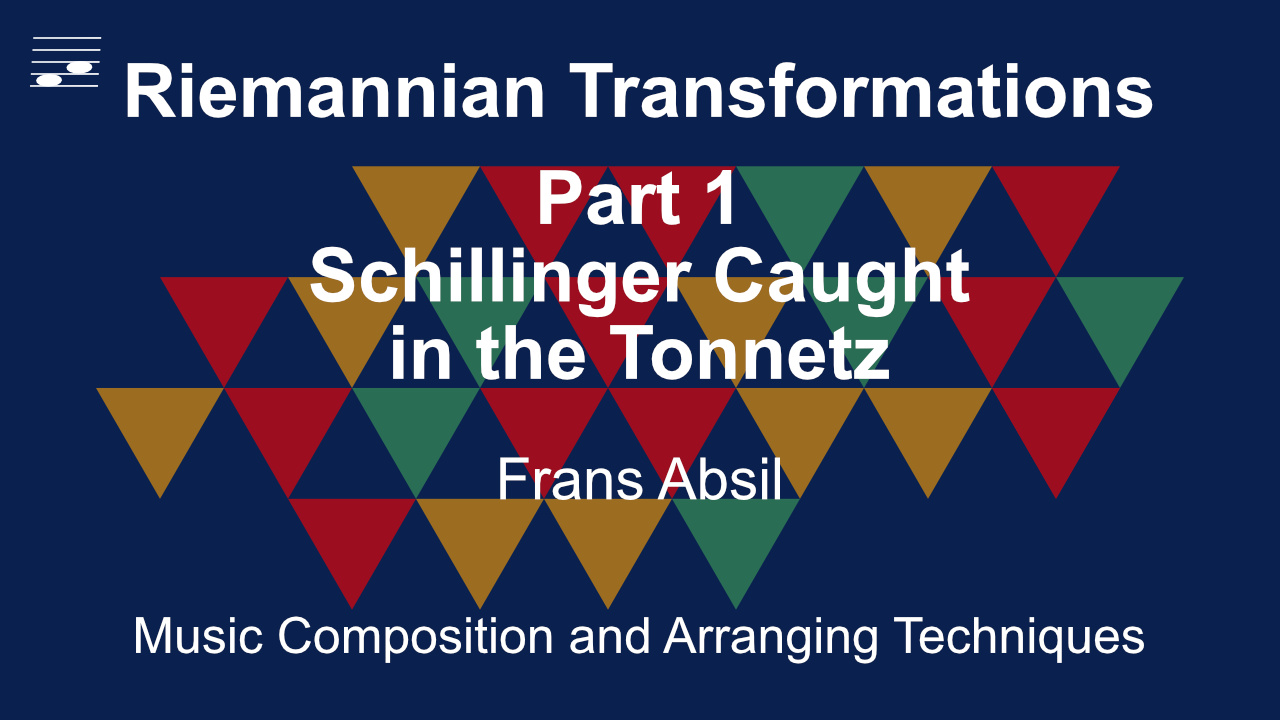 The episode
Riemannian Transformations: Part 1 Schillinger Caught in the Tonnetz (26:59) presents the 3 elementary transformations (Parallel, Relative and Leading-tone exchange) and the compound transformations (PL, LP, PR, RP). Each of these is shown for major and minor triads in the Tonnetz diagram and staff notation. Transformations are interpreted in terms of the equivalent Schillinger Symmetric Harmony System Root Cycle, and demonstrated with a very short musical application example.
This tutorial is in the Music Composition Techniques playlist.
The episode
Riemannian Transformations: Part 1 Schillinger Caught in the Tonnetz (26:59) presents the 3 elementary transformations (Parallel, Relative and Leading-tone exchange) and the compound transformations (PL, LP, PR, RP). Each of these is shown for major and minor triads in the Tonnetz diagram and staff notation. Transformations are interpreted in terms of the equivalent Schillinger Symmetric Harmony System Root Cycle, and demonstrated with a very short musical application example.
This tutorial is in the Music Composition Techniques playlist. -
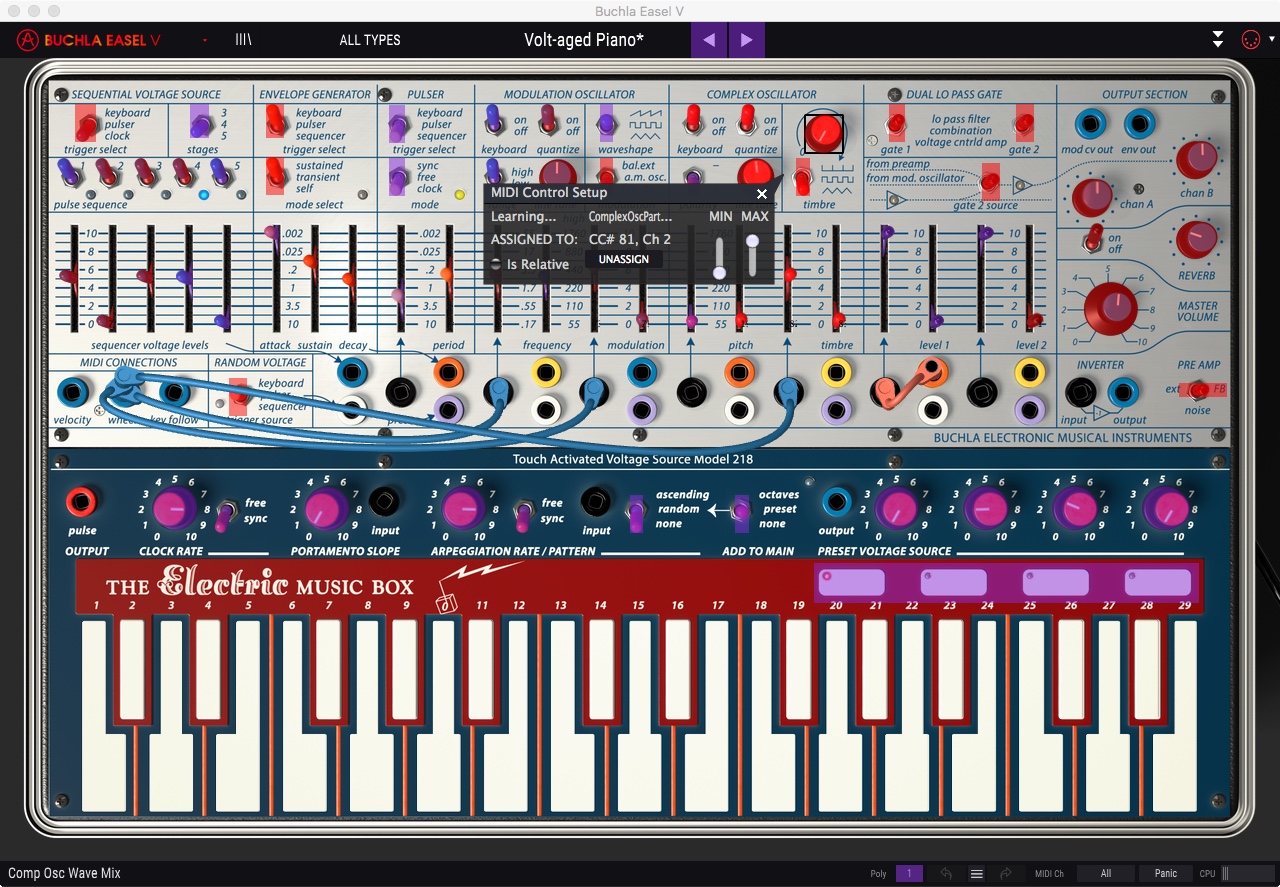 If, like me, you create music with the Arturia V Collection and you want to design and implement Midi controllers for these virtual instruments, you might be interested in the overview of the Default Midi Controller Configuration. I created an overview table in PDF format that shows the Midi CC mapping for all synthesizers, samplers and other keyboard instruments in the collection. For a link to the table and an analysis of the results, visit the page
Arturia V Collection Default Midi Controller Configuration.
If, like me, you create music with the Arturia V Collection and you want to design and implement Midi controllers for these virtual instruments, you might be interested in the overview of the Default Midi Controller Configuration. I created an overview table in PDF format that shows the Midi CC mapping for all synthesizers, samplers and other keyboard instruments in the collection. For a link to the table and an analysis of the results, visit the page
Arturia V Collection Default Midi Controller Configuration.
- There is a fairly recent reference to my Film Music Tempo Calculator, which finds the best BPM fit for a fixed tempo cue with multiple hit points. Read the article on Finding the Perfect Tempo for a Film Score on the DIY Film Composer Website (published September 4, 2018). For more information and using the tool go to the Film Music Tempo Calculation Tool >>
<< Previous - Top of page - Next >>
February 2020: Twelvetone triads with modal triad polychords, Part 3
The YouTube series on Twelvetone Triads and Hexachords is complete with Episode 3.
- Watch the 3rd tutorial about Twelvetone Triads in the
Music Composition Techniques playlist.
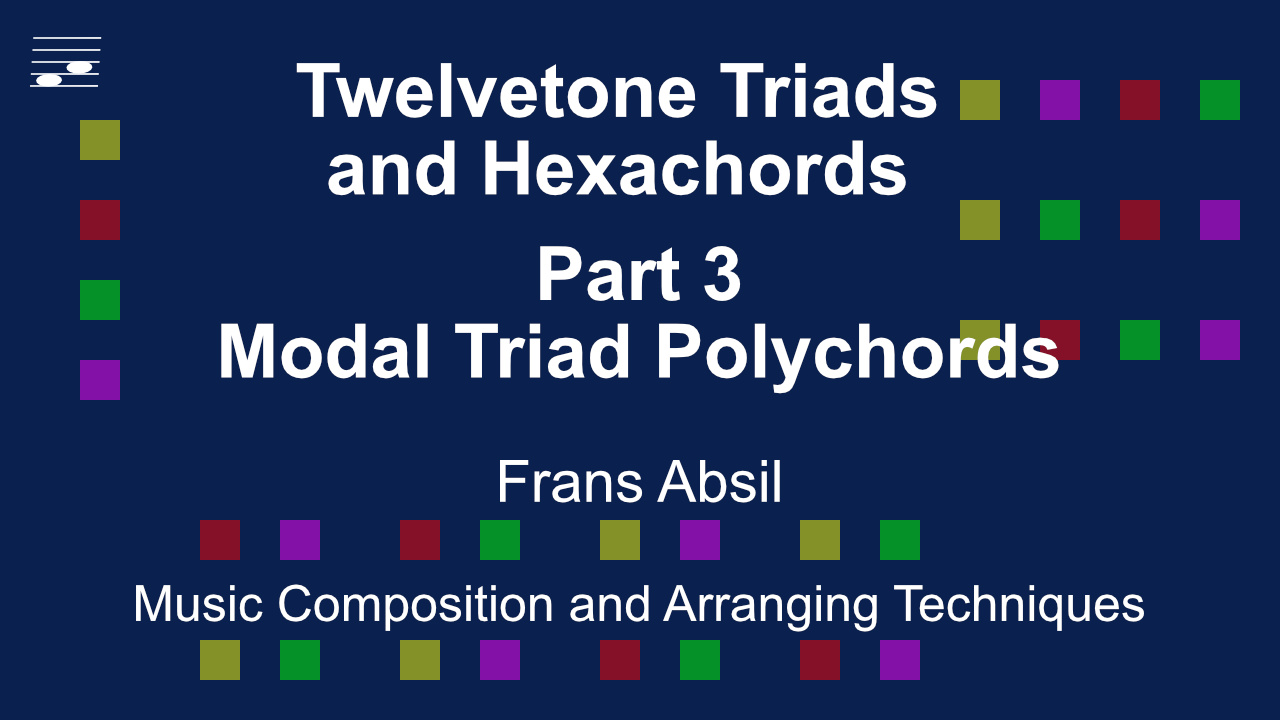 In
Twelvetone Triads and Hexachords: Part 3, Modal Triad Polychords (23:25) we study twelvetone triad sets from combinations of regular triads in 3rds (major, minor, diminished,) and modal trichords (sus2, sus4, Lydian and Phrygian trichord). This video presents 4 modal triad sets with an analysis of hexachord combinations and polychord voicing in terms of Pitch-Class Sets and chord tension level classification. These triad sets are applied in music composition through juxtaposition of hexachord combinations and polychord permutations, transposition with pivot chords and overlapping pitches, variable density and strata harmony, and combining different diatonic and atonal harmony systems.
In
Twelvetone Triads and Hexachords: Part 3, Modal Triad Polychords (23:25) we study twelvetone triad sets from combinations of regular triads in 3rds (major, minor, diminished,) and modal trichords (sus2, sus4, Lydian and Phrygian trichord). This video presents 4 modal triad sets with an analysis of hexachord combinations and polychord voicing in terms of Pitch-Class Sets and chord tension level classification. These triad sets are applied in music composition through juxtaposition of hexachord combinations and polychord permutations, transposition with pivot chords and overlapping pitches, variable density and strata harmony, and combining different diatonic and atonal harmony systems. - Another major job on the YouTube channel was to provide all Music Composition and Arranging Technique tutorials with Timestamp Links in the description. Now watching parts of a video or specific techniques and examples will be much easier; no need for fast forward, rewind and endless search. This will improve the viewer experience.
<< Previous - Top of page - Next >>
January 2020: Twelvetone triads with regular triad polychords, Part 2
New video tutorial on the YouTube channel and new SoundCloud audio demo.
- The 2nd video tutorial about Twelvetone Triads has been added to the
Music Composition Techniques playlist.
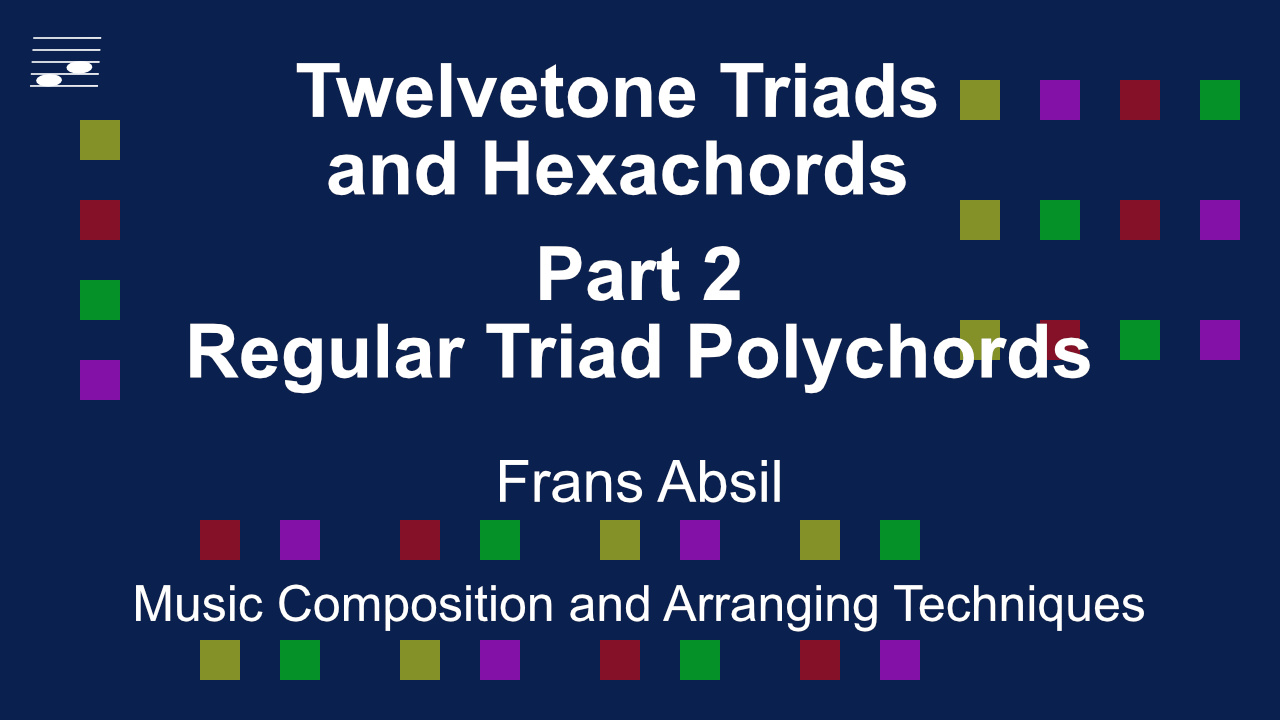 The episode
Twelvetone Triads and Hexachords: Part 2, Regular Triad Polychords (28:54) discusses the options for creating twelvetone triad sets from regular triads in thirds, i.e., the major, minor, augmented and diminished triad. For each 12-tone triad set the hexachord combination properties and polychord stacking permutations are analysed in terms of corresponding Pitch-Class set, Interval-Class Vector, Hindemith chord group and Ulehla tension level. You'll find example chord progressions and application of Instrumental Forms in short composition examples in various styles.
The episode
Twelvetone Triads and Hexachords: Part 2, Regular Triad Polychords (28:54) discusses the options for creating twelvetone triad sets from regular triads in thirds, i.e., the major, minor, augmented and diminished triad. For each 12-tone triad set the hexachord combination properties and polychord stacking permutations are analysed in terms of corresponding Pitch-Class set, Interval-Class Vector, Hindemith chord group and Ulehla tension level. You'll find example chord progressions and application of Instrumental Forms in short composition examples in various styles. - The piece 'Chasing da Capo' (3:04) is a 128 BPM chase music cue for orchestra and electronic instruments (synths, electric guitar). Extensive use of the Z-related all-interval Pitch-Class sets 4-Z15 and 4-Z29. Obligatory staccato strings, piano and low string runs, and brass stabs included. Sample Modeling strings and brass, Audio Modeling woodwinds, Ample Sound guitar, NI Grandeur piano, Cubase synths. This is the first result of my Cubase 10 relearning effort.
